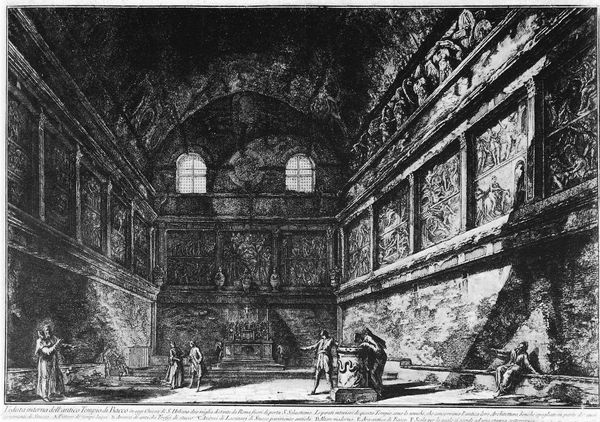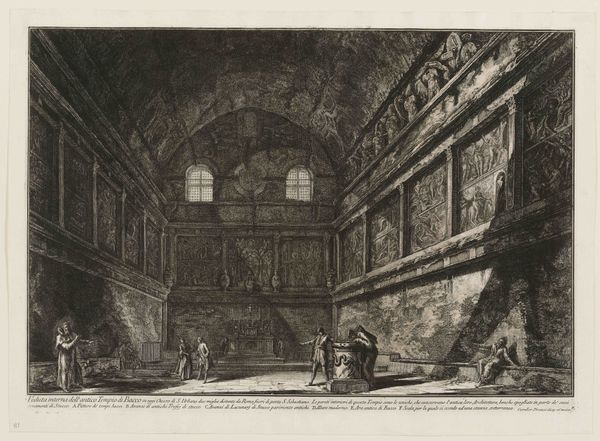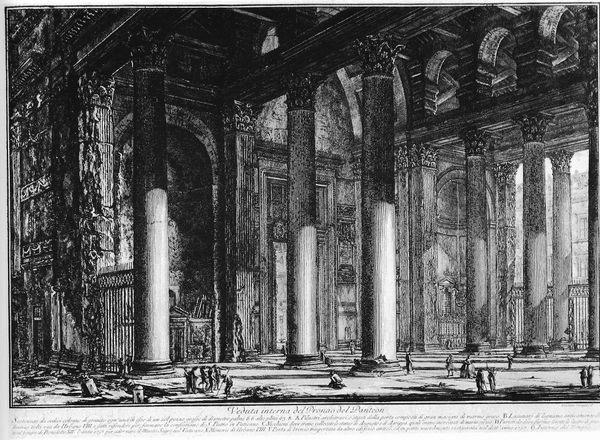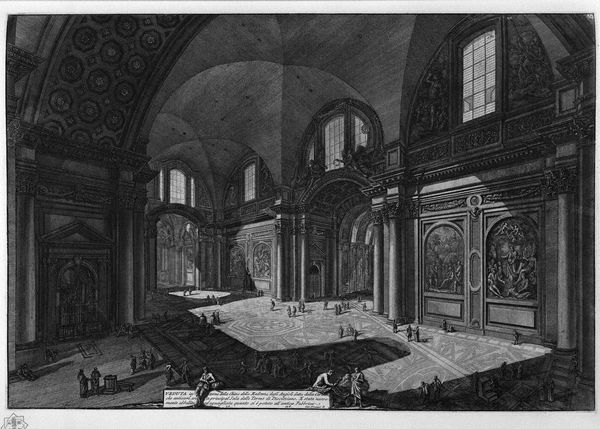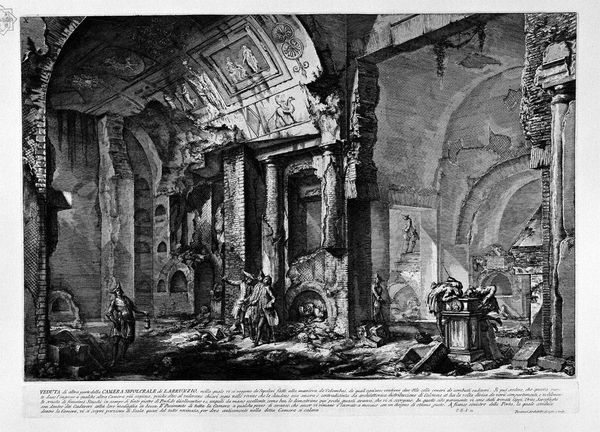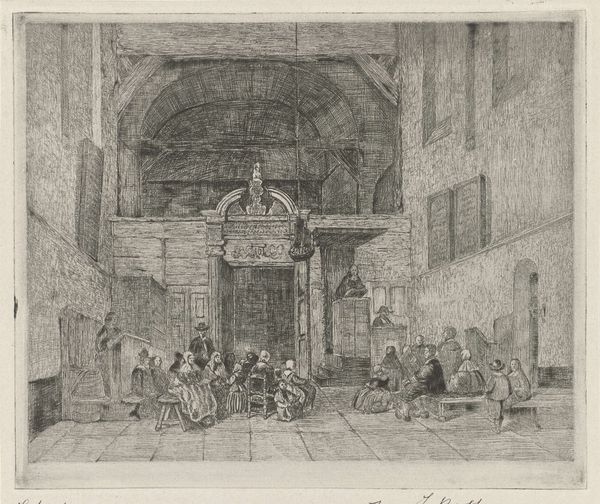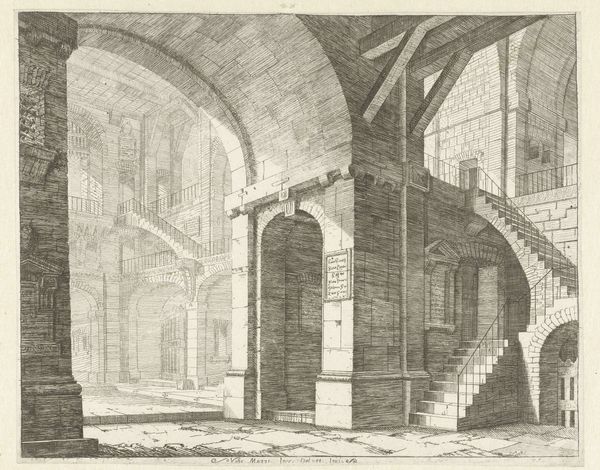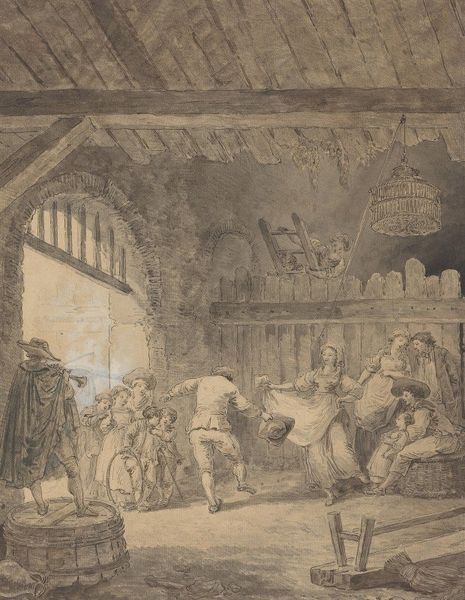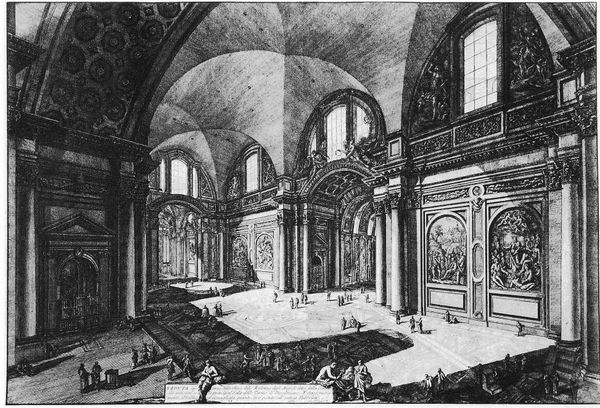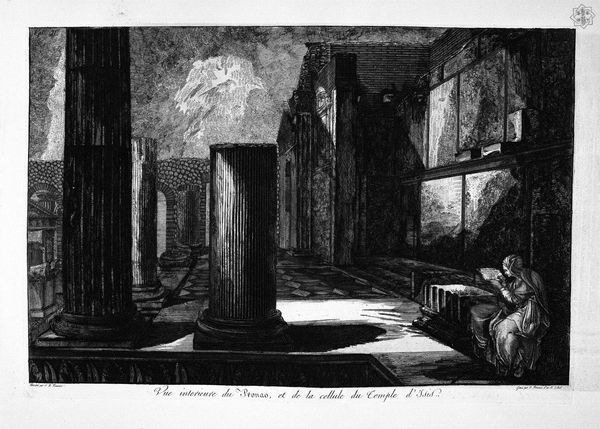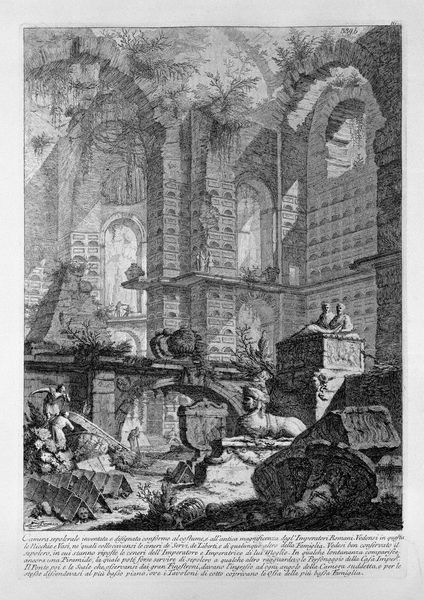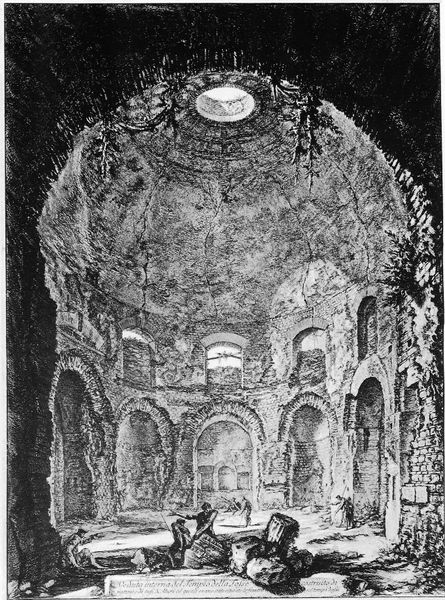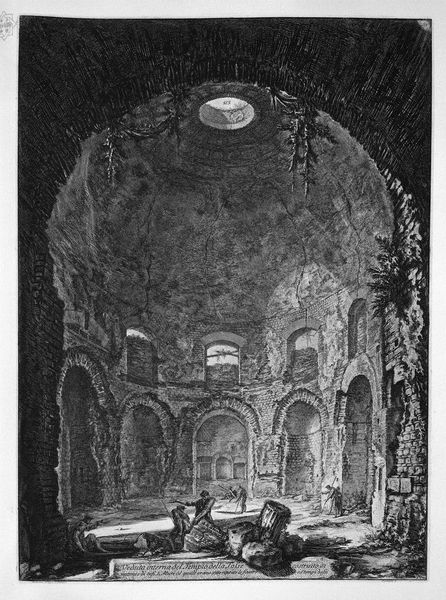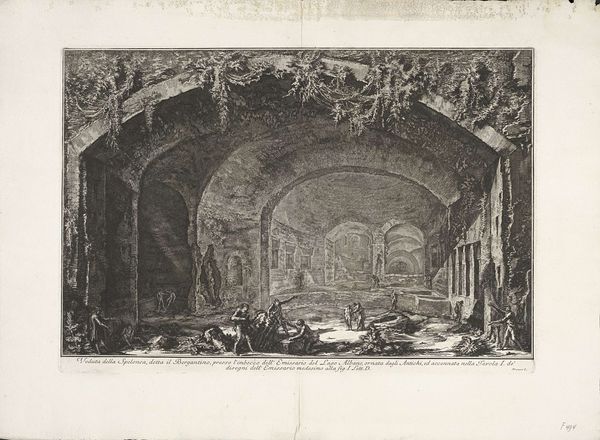
drawing, carving, ink, sculpture, engraving, architecture
#
drawing
#
carving
#
sculpture
#
perspective
#
form
#
romanesque
#
ink
#
classicism
#
ancient-mediterranean
#
sculpture
#
line
#
cityscape
#
history-painting
#
charcoal
#
engraving
#
architecture
#
realism
#
ruin
#
statue
#
building
Copyright: Public domain
Editor: This is Giovanni Battista Piranesi's "Temple of Ceres and Faustina," created using drawing, carving, and engraving. It gives the impression of being inside this grand, cavernous space; it feels almost overwhelming. What can you tell me about how it was constructed? Curator: From a materialist point of view, the engraving itself becomes quite fascinating. Consider the sheer labor involved in creating this intricate design. Each line, each shadow, meticulously etched onto the plate, then pressed, and endlessly reproducible. This is about accessibility, disseminating images of power and antiquity to a wider audience through the printed image. Editor: So, you’re focusing less on the Roman temple itself, and more on Piranesi's technique? Curator: Absolutely! And how his method reflects and impacts its cultural value. Think about it: the temple as the source, as the historical material that can then be transformed via printing into a commodity in a way. Its mass production changes our relation to the classical world itself. The original temple serves one purpose, engraving the image serves another. Editor: It's almost like he's re-fabricating the monument, democratizing it through printmaking? Curator: Precisely. Before photography, engraving like this was one of the most accessible ways to share visual information, and in the art world it fueled the art market by enabling consumption. The architectural accuracy, the shadows... all available through his process. The materiality of ink, paper, and printing is very telling, isn’t it? Editor: I hadn’t considered the sheer industrial aspect before. Now, looking at it, I’m not just seeing a temple; I'm seeing the mechanics of image-making and its effects on society. Thank you for the insight.
Comments
No comments
Be the first to comment and join the conversation on the ultimate creative platform.
